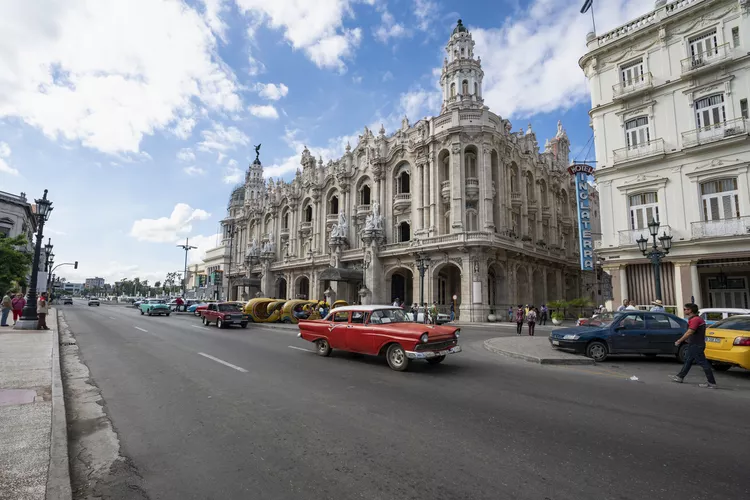Summary
Step off the plane in Havana and it’s clear you’ve traveled to a city trapped in time. There are no waiting areas for Lyft or Uber, just dozens of drivers with paper signs or seated behind the wheel of classic American cars. As Cuba’s capital and largest city, Havana is steeped in historical significance and culture. Located on Cuba’s north coast, it was once a key shipping hub and a mecca for American tourists before the Cuban revolution. With about two million inhabitants, the city was founded by Spaniards in the 16th century and is home to Cuba’s leading museums, public squares, and churches. The city’s main attractions are found across a number of adjacent and highly walkable neighborhoods. Here are five distinct areas to include in your Havana itinerary.
Old Havana

Known as La Habana Vieja, Old Havana serves as the city’s historic core and is classified as a UNESCO World Heritage Site. This area is characterized by the remnants of Havana’s city walls and showcases the architecture that defines the city. The picturesque cobblestone streets echo the footsteps of Ernest Hemingway, guiding visitors through larger public plazas adorned with churches and historical buildings. Among its rich offerings, you’ll find Cuba’s National Capitol building, the iconic Floridita Bar, and the ornate Gran Teatro de la Habana. It is an ideal spot for people watching, enjoying window shopping, and exploring artisan markets.
Centro Havana

Centro Havana acts as the vibrant heart of urban life in Havana. Music fills the air as it spills from open windows into streets where children are playing and men are repairing classic American cars. This district is both densely populated and less polished compared to Old Havana, making it a haven for local life beyond the tourist scene. The crumbling buildings here tell myriad stories, providing excellent opportunities for people watching. You can also discover street art, enjoy local vendors, and explore small shops that reflect the true essence of Havana.
Vedado

Vedado is typically newer than Central Havana and features a grid of numbered and lettered streets that simplify navigation. It became a main social area from the 1920s to the 1950s, drawing comparisons to cities like Miami and New York. During this period, the American mafia frequented the neighborhood. Presently, Vedado offers a mix of residential areas alongside trendy restaurants, boutique hotels, and jazz clubs. Notable landmarks include the Hotel Nacional, an iconic luxury hotel once popular among the elite, and Coppelia, known for its unique ice cream offerings.
Barrio Chino

Visitors to Havana’s Chinatown will soon realize that the neighborhood isn’t heavily populated by Chinese residents. The influx of Chinese laborers began in the 1840s, contributing to a thriving community by the 1920s. However, much of this population left Cuba when Fidel Castro came into power. Today, Calle Cuchillo stands as the center of activity in this historic neighborhood just west of the capitol building. Enhancements by the Cuban government in the 1990s, such as a pagoda-shaped arch and bilingual street signs, reflect the area’s heritage.
Miramar

While Washington, D.C., is known for its Embassy Row, Havana boasts Miramar, which was once a wealthy beachside residential area prior to the Cuban revolution. Over the years, many mansions turned into foreign embassies, particularly along Avenidas 5ta. The architecture here is impressive, with the Russian Embassy being a notable highlight. Miramar is also home to Cuba’s Acuaria Nacional, adding to the area’s appeal, alongside its more business-focused atmosphere that attracts expatriates.





